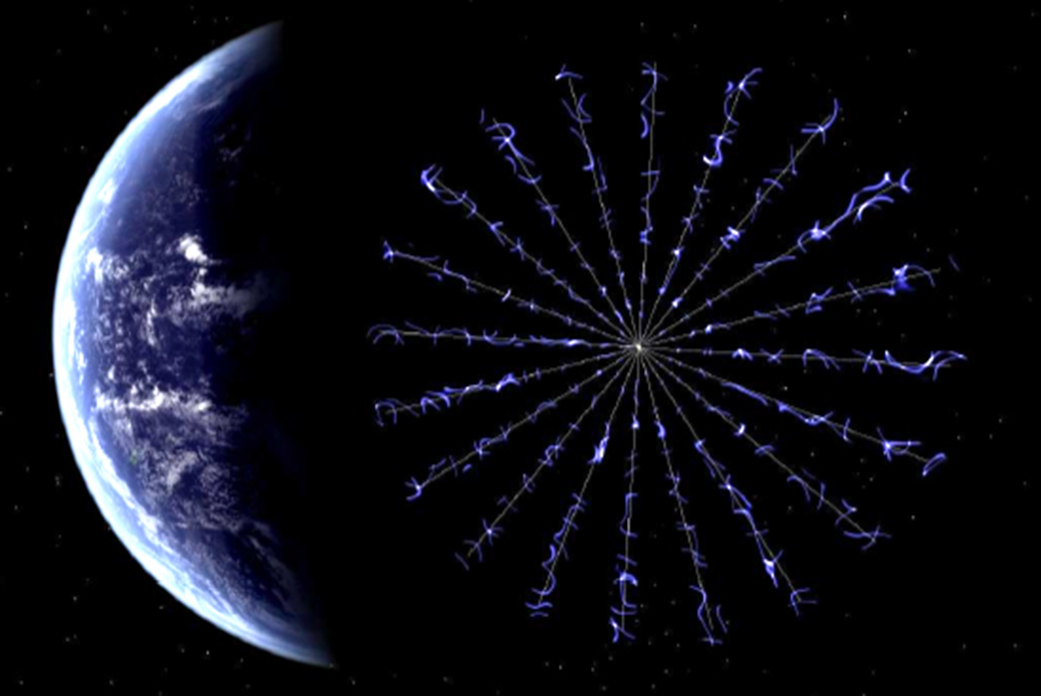
Copyright:
原文:
Want to take a fast trip to the edge of the Solar System? Consider a ride on a Heliopause Electrostatic Rapid Transit System (HERTS). The concept is currently being tested and it might take only 10 to 15 years to make the trip of over 100 Astronomical Units (15 billion kilometers). That’s fast compared to the 35 years it took Voyager 1, presently humanity’s most distant spacecraft, to approach the heliopause or outer boundary of the influence of the solar wind. HERTS would use an advanced electric solar sail that works by extending multiple, 20 kilometer or so long, 1 millimeter thin, positively charged wires from a rotating spacecraft. The electrostatic force generated repels fast moving solar wind protons to create thrust. Compared to a reflective solar light sail, another propellantless deep space propulsion system, the electric solar wind sail could continue to accelerate at greater distances from the Sun, still developing thrust as it cruised toward the outer planets.
中文翻譯:
想快速前往太陽系邊緣?考慮搭乘**HERTS (Heliopause Electrostatic Rapid Transit System)**。這個概念目前正在測試中,可能只需要10到15年就能完成超過100個天文單位(150億公里)的旅程。相比之下,**Voyager 1**,目前人類最遠的太空探測器,花了35年才接近**heliopause**(太陽風影響的外邊界)。HERTS將會使用一種先進的電動太陽帆,透過從旋轉的太空船延伸出多條約20公里長、1毫米薄的正電荷線來產生推進力。這種電靜力所產生的力量會排斥快速移動的太陽風質子,從而提供推進力。與反射型太陽光帆這種另一種無推進劑的深空推進系統相比,電動太陽風帆可以在離太陽更遠的地方持續加速,依然可以在前往外行星的航程中發揮推進作用。
#HERTS #Heliopause #Voyager1 #太陽系 #深空探索 #電動太陽帆 #太空旅行 #科技創新 #探索宇宙
來源:NASA每日圖片


